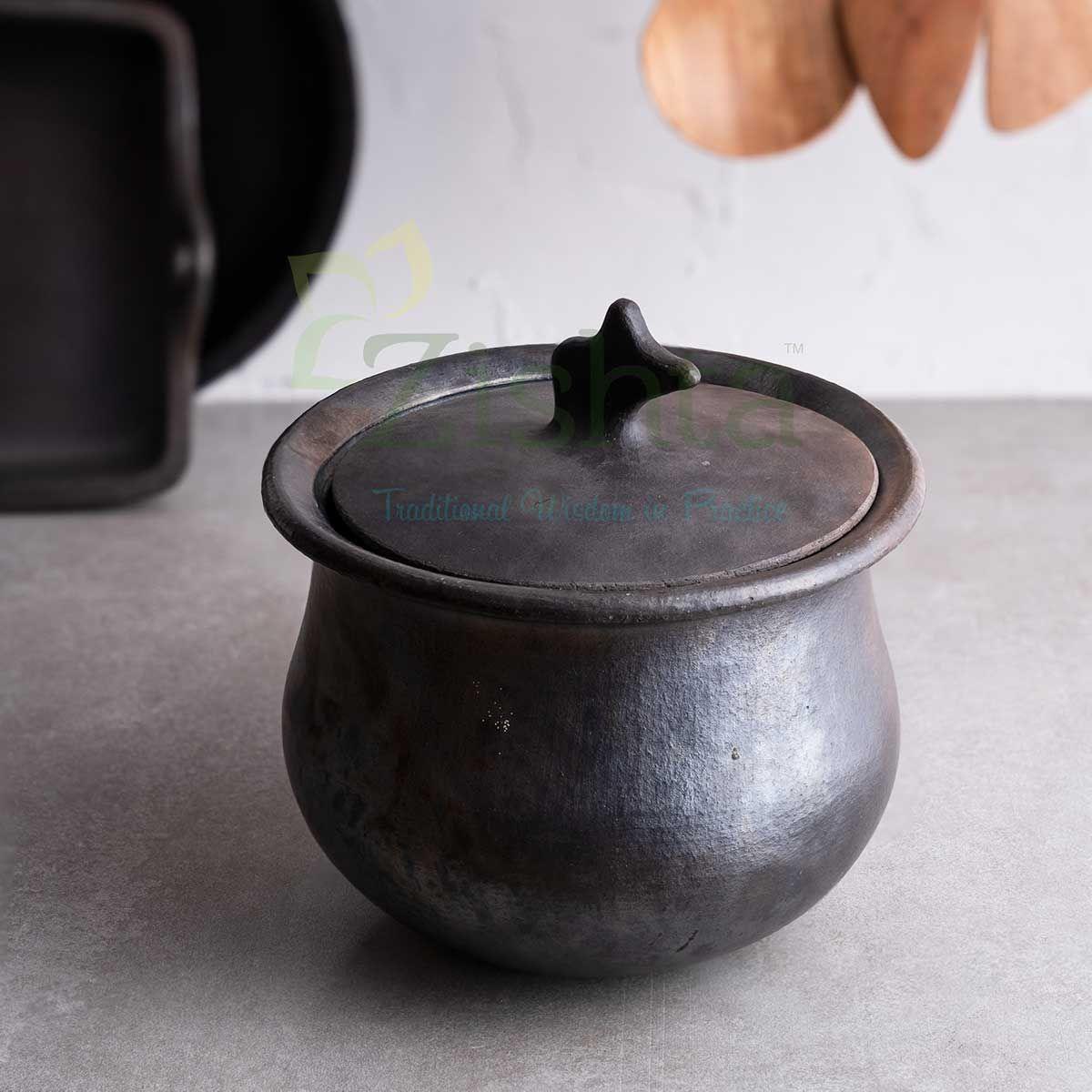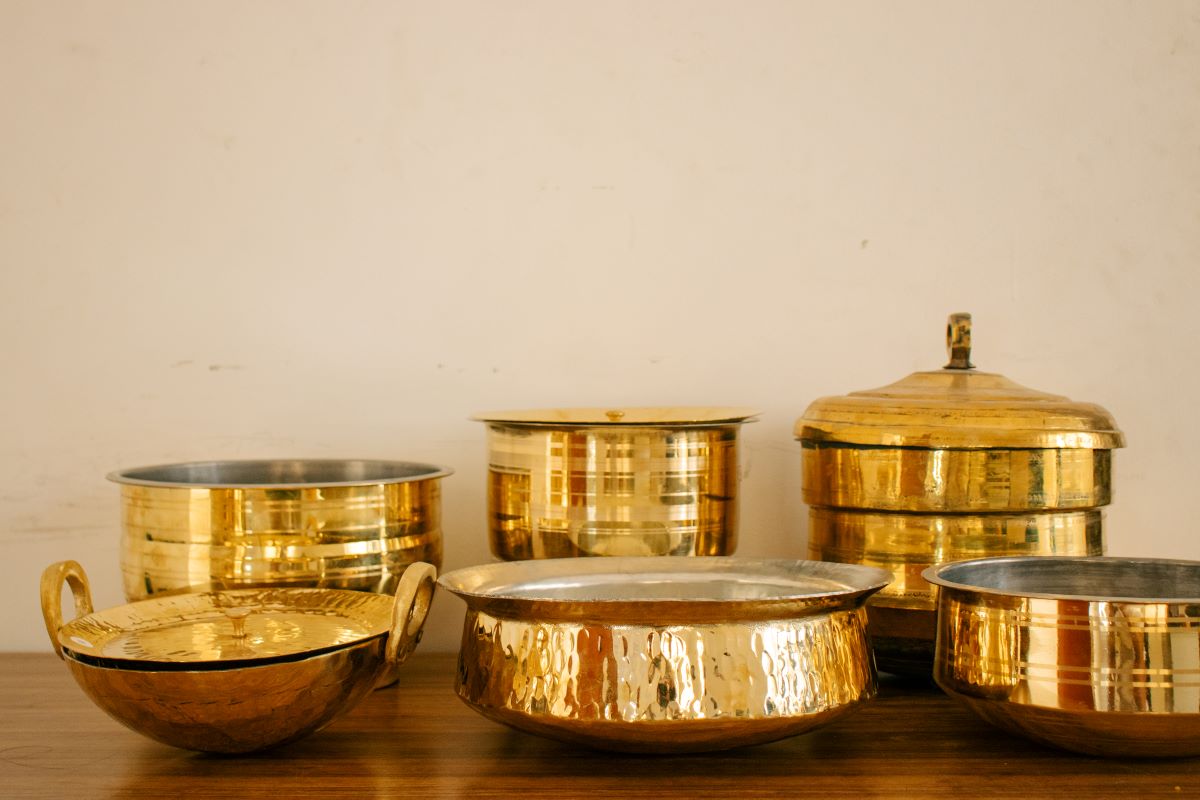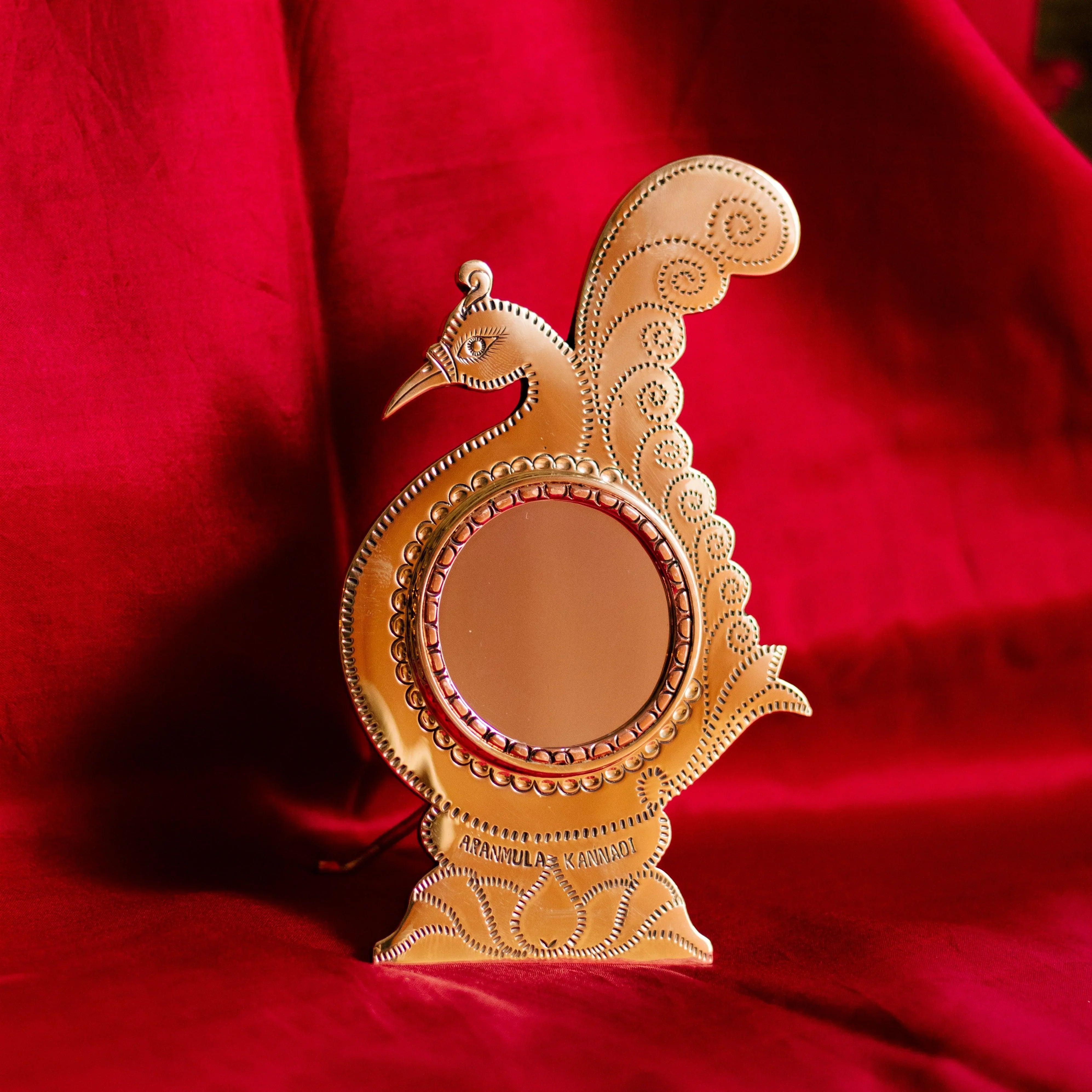The history behind Longpi Pottery
Manipur Longpi pottery is a traditional pottery style that originates from the village of Longpi in Manipur, India.
The history of Longpi pottery dates back several centuries and is closely linked to the Tangkhul Naga community of Manipur, India. Longpi pottery is believed to have been developed by the Tangkhul Naga women, who discovered that the local clay and weathered rock from the region could be combined to make durable and unique pottery.


Longpi pottery is also known as "Black Serpentinite Pottery" because of the use of serpentinite rock in the pottery-making process. The serpentinite rock is found in the hills surrounding the village of Longpi and is believed to have been formed millions of years ago because of volcanic activity.
The pottery-making process was traditionally a communal activity in the Tangkhul Naga community, with women gathering to collect the clay and weathered rock, and then working together to create the pottery. The pottery was used for a variety of purposes, including cooking, serving food, and storing water.


Over time, Longpi pottery became an important part of the cultural identity of the Tangkhul Naga community, with each piece of pottery being imbued with cultural and spiritual significance.
Today, Longpi pottery is still made using traditional techniques and is highly prized for its durability, unique natural finish, and cultural significance.
In recent years, efforts have been made to promote Longpi pottery as a traditional handicraft and to provide training and support to local artisans to help preserve and promote this unique craft.
How is Longpi Pottery made?
The pottery is made by hand using coiling techniques, and the finished product is known for its durability and unique, natural finish. Here are the steps involved in making Manipur Longpi pottery:
- Preparation of Clay: The first step in making Longpi pottery involves preparing the clay mixture. The clay used in Longpi pottery is a mix of two types of clay - locally sourced clay and a special type of clay called "weathered rock" or "serpentinite". The two types of clay are mixed in a ratio of 3:1.
- Hand-rolling and Shaping: The clay mixture is then hand-rolled into long, thin ropes, which are then coiled into the desired shape of the pottery. The coils are then smoothed and shaped by hand to create the final shape of the pottery.
- Burnishing: After shaping the pottery, it is burnished by rubbing the surface with a smooth river stone. This helps to give the pottery its unique, natural finish and also makes it more durable.
- Drying: The pottery is then left to dry in the sun for several days until it is completely dry.
- Firing: Once the pottery is dry, it is fired in a traditional wood-fired kiln. The firing process takes several hours, during which the pottery is heated to a high temperature. The serpentinite in the clay mixture reacts with the heat to give the pottery its distinctive black colour.
- Finishing: After firing, the pottery is allowed to cool and then polished with a smooth stone and Macha leaves to enhance its shine and durability.
The process of making Manipur Longpi pottery is a labor-intensive and time-consuming process that requires skill and patience. However, the result is a beautiful, durable piece of pottery.
Seasoning and Use of Longpi Pottery


Longpi pottery is a type of stoneware that is well suited for use in cooking, serving, and storing food and beverages. Here are some tips for using Longpi pottery:
- Seasoning the Pottery is not mandatory and can be used as post-wash. But certain traditional sources recommend certain things to do before first use. Before using Longpi pottery for the first time, it is important to season the pottery to help protect it and enhance its natural finish. To season the pottery, rub the surface of the pottery with a little bit of cooking oil, such as vegetable oil or sesame oil. Then heat the pottery over a low flame for a few minutes. This will help to create a non-stick surface on the pottery and help to enhance its natural finish.
- Cooking: Longpi pottery is great for cooking a variety of dishes, such as stews, curries, and soups. When cooking with Longpi pottery, it is important to use low to medium heat to avoid cracking or damaging the pottery. Also, make sure to stir the food regularly to prevent it from sticking to the bottom of the pottery.
- Serving: Longpi pottery is also great for serving food and beverages, such as rice, dal, or tea. The pottery is well insulated, which helps keep food and beverages warm for a longer period. To serve food or beverages in Longpi pottery, simply fill the pottery with the desired food or drink and place it on a trivet or other heat-resistant surface.
- Cleaning: Longpi pottery should be cleaned by hand using mild detergent and warm water. Avoid using harsh chemicals or abrasive sponges, which can damage the pottery. Rinse the pottery thoroughly, dry it with a soft cloth, or let it air dry.
By following these simple tips, you can enjoy the beauty and functionality of Longpi pottery for years to come.
Does Manipur Black Pottery work well on Induction?
No, Longpi pottery is not suitable for use on induction cooktops. Longpi pottery is made from stoneware, which is a type of clay-based material that is not magnetic. Induction cooktops require cookware that is made from ferromagnetic materials such as cast iron or magnetic stainless steel, which can create a magnetic field and generate heat.
Longpi pottery is better suited for use on gas stoves, OTG Ovens, electric Coil stoves, Ceramic hot plates, or traditional wood-fired stoves, which provide gentle and even heat that is well suited for slow cooking. Longpi pottery is also great for serving food and beverages, as it is well-insulated and helps to keep food and drinks warm for a longer period.
Benefits of Cooking in Manipur Pottery


Cooking in Manipur Longpi pottery has several benefits, both practical and cultural. Here are some of the benefits:
- Durability: Longpi pottery is made of a blend of clay and weathered rock, which makes it incredibly durable and resistant to chipping and breaking. Longpi pottery can last for generations with proper care.
- Rich in Iron & kills harmful germs and bacteria especially while cooking meat.
- No Chemicals or Toxins: Longpi pottery has a unique natural finish that is created by the use of black serpentinite rock in the pottery-making process. The finish is smooth and polished, giving the pottery a beautiful and distinctive appearance.
- Naturally Non-Stick: Longpi pottery has a natural non-stick surface that makes it easy to cook with and clean. Seasoning the pottery before use helps to create a non-stick surface that enhances the cooking experience.
- Retains Nutrients: Longpi pottery is well insulated, which helps to retain the natural nutrients and flavors of the food. This is particularly beneficial when cooking foods that are rich in vitamins and minerals.
- Cultural Significance: Longpi pottery is an important part of the cultural identity of the Tangkhul Naga community of Manipur. Each piece of pottery is imbued with cultural and spiritual significance, making it more than just a functional object.
- Sustainable: Longpi pottery is made using locally sourced materials and traditional techniques, which helps to support local communities and preserve traditional handicrafts.
- Traditional Wisdom: Longpi pottery is an important part of the cultural identity of the Tangkhul Naga community of Manipur. Cooking and serving food in Longpi pottery helps to preserve traditional handicrafts and the wisdom of the community.
Cooking in Longpi pottery is a unique and rewarding experience that offers both practical and cultural benefits. Whether you are cooking a simple meal or a complex dish, Longpi pottery is a great choice for any kitchen.
Precautions while using Longpi Pottery
- Thermal Shock: Longpi pottery is susceptible to thermal shock, which can cause cracking or breakage. To prevent thermal shock, do not expose the pottery to extreme temperature changes. For example, do not transfer the pottery directly from the refrigerator to a hot stove or oven.
- Cleaning: Longpi pottery should be cleaned with mild soap and warm water, and then dried thoroughly before storing. Avoid using abrasive sponges or harsh detergents, which can damage the pottery.
- Storage: Longpi pottery should be stored in a dry, cool place to prevent moisture from accumulating inside the pottery. Avoid stacking the pottery, which can cause it to crack or break.
By following these precautions, you can ensure that your Longpi pottery lasts for a long time and continues to perform well.
Also Read: The Story Of Our Exciting Journey Into The World Of Manipur Black Pottery




4 comments
Athiya
I would like to buy Manipur longpi guide me to get it thank you…it’s very informative .
Athiya
I would like to buy Manipur longpi guide me to get it thank you…it’s very informative .
Shruti
Hi would like to buy again. As I have been using these for past three years and it’s just awesome. Thank
You
Philomena
Hii
Interested to purchase and if I can get hold of any site where this can be bought, would help a lot.
Many thanks.
Philomena
Leave a comment
All comments are moderated before being published.
This site is protected by hCaptcha and the hCaptcha Privacy Policy and Terms of Service apply.